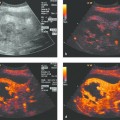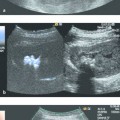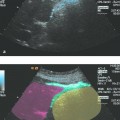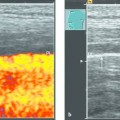Sedation in Interventions
11.1 Introduction
Almost all percutaneous interventional procedures can be performed under local anesthesia. Sedation may occasionally be indicated for reasons relating to the procedure itself or to the patient.
Endosonography is almost always performed under deep sedation, because it is an endoscopic procedure that requires very steady examination conditions so that small structures can be accurately assessed. In addition, endosonographic procedures may take up to 20 minutes and would be difficult for most patients to tolerate. Although sedation can be administered by the oral, subcutaneous, intramuscular, or intravenous routes in principle, intravenous sedation is the only reasonable option for interventional procedures due to its good short-term controllability.
Sedation in sonographic practice is based on the S3 guideline on sedation for gastrointestinal endoscopy published in 2008.1 According to this guideline, sedation should always be preceded by a clinical evaluation in which any cardiovascular or respiratory problems are assessed according to ASA (American Society of Anesthesiologists) criteria2 (▶ Table 11.1). Patients in ASA class III or higher have a markedly increased risk potential for sedation and interventions. The S3 guideline notes that the presence of an anesthesiologist may be desirable for the sedation of patients with a high risk profile. The ASA classification of patients should include a detailed history with questions relating to:
Diseases of the cardiovascular and respiratory system, stridor, snoring, sleep apnea syndrome
Prior complications involving the use of sedatives or analgesics, regional and general anesthesia
Drug allergies, current medications and possible drug interactions
Time and composition of the most recent meal
Alcohol, tobacco, and drug use
| Class | Description |
| I: Healthy patient | No preexisting diseases |
| II: Mild systemic disease | Examples: mild asthma, well-controlled seizure disorder, anemia, well-controlled diabetes mellitus, moderate arterial hypertension, obesity |
| III: Severe systemic disease | Examples: moderately severe to severe asthma, poorly controlled seizure disorder, pneumonia, poorly controlled diabetes mellitus, prior myocardial infarction, pulmonary tuberculosis |
| IV: Very severe, life-threatening, incapacitating systemic disease | Examples: severe bronchopulmonary dysplasia, sepsis, advanced stage of respiratory, heart, liver or kidney failure, recent myocardial infarction, shock |
| V: Moribund patient | Death expected within 24 hours |
The history is followed by a physical examination that includes vital signs and auscultation of the heart and lungs.
This practice is analogous to existing guidelines3–5 and should always be followed. Protective intubation is very rarely necessary during a sonographic procedure.
Sedation, like the procedure itself, requires informed consent. The patient’s right of self-determination calls for a timely declaration of consent in which the patient can freely make a decision without time pressure.6 Informed consent is based on a personal, confidential interview that takes place in a calm atmosphere without distractions or disturbances (see Chapter ▶ 3).
11.2 Medications
The agents most often used for procedural sedation are midazolam and propofol. Pethidine and ketanest are less commonly used.7 With the availability of drug information, it is often asked whether certain types of medications may be administered by nonanesthesiologists. The answer depends in part on personal qualifications such as experience in intensive care medicine, emergency training, or regular service in an ambulance or emergency response vehicle. Thus, nonanesthesiologists may be qualified to work with these agents. The advantages of midazolam are that it induces anterograde amnesia and has an antidote (flumazenil), but it also has a longer duration of action that requires a longer observation period after the procedure.8–10 Midazolam-induced respiratory depression is reversed approximately 120 seconds after the intravenous administration of flumazenil.11 Propofol has excellent controllability but does not have an antidote.
11.3 Personnel Requirements
Ideally, intravenous sedation is administered by a specialist in anesthesiology, but this is rarely possible in practice due to staff limitations and cost constraints. Even a physician experienced in critical care medicine is not always available.1 Studies on nurse-administered propofol sedation (NAPS), although dealing with endoscopic procedures,12–16 have provided an important basis for expanding the role of assisting personnel. Although many studies were published after the introduction of propofol, the basic principles of sedation guidelines still apply to other agents such as midazolam.17,18
Stay updated, free articles. Join our Telegram channel

Full access? Get Clinical Tree








